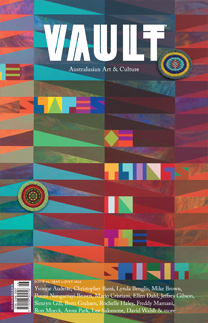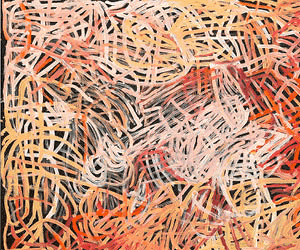Bonita Ely:
Art
Predicts
Life
Ecofeminist Bonita Ely’s practice since the 1970s has renewed relevance in a pandemic era.
While so many works of the 1970s and ’80s can look outdated in a contemporary context, Bonita Ely’s early works are eerily prophetic. Ely’s consistent exploration of the major issues of our times, across an international exhibiting career spanning several decades, continues to make an impact.
Perhaps the most iconic of all Ely’s works is her satirical performance as a jaunty cooking demonstrator. Murray River Punch (1980) was first staged in 1980 at Melbourne University, and documented in a sound recording, series of photographs and a written recipe that includes “1Tbl. Sp. Powdered European Carp” and “1/4 Cup Human Urine.” Offered to nonplussed bystanders, Ely used “the context of the cooking demonstration, then seen as a strategy of policing normative feminine behaviour, to discuss the chemical contamination of Australia’s iconic waterway,” explains art historian Courtney Pedersen.1 The work has since been re-staged several times, including a collaborative intergenerational version with Emma Price at Brunswick Street Gallery, Melbourne in 2014.
Ely views her entire oeuvre as feminist, specifically ecofeminist. She asserts that the patriarchal modes of exploiting women and other marginalised groups are the same that allow for the mistreatment of natural resources. She became associated with ecofeminist discourse in the late 1970s and early 1980s through works such as Jabiluka UO2 (1979), a performance enacting the potential destruction of the Mirrarr people’s land by uranium mining. Such future effects of environmental destruction have remained a recurring concern of Ely’s throughout the decades.
For Ely, the Fluxus movement has been a constant touchstone. This avant-garde..Subscribe to read this article in full
























